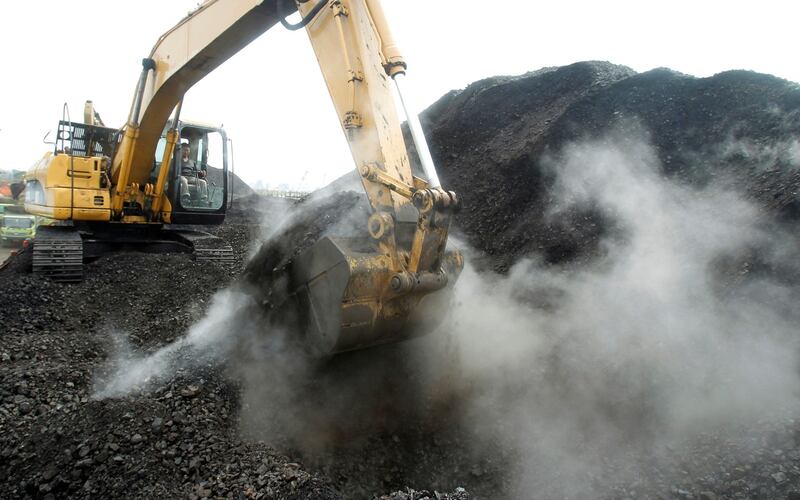China rapidly accelerated plans for new coal power plants in the second half of last year, derailing the overall progress made in the global efforts to limit warming to 1.5 degrees Celsius, a group of environmental analysts said this week.
In a bid to increase its energy security, Beijing approved the highest new coal capacity in eight years, increasing coal power project by 45%, or 77 gigawatts (GW), climate change think-tank E3G said in a report released on March 14.
It means China’s total pre-construction pipeline is 250 GW. The world’s largest carbon emitter currently has another 115 coal power projects under construction.
“The second half of 2022 saw the largest-ever increase in pre-construction capacity in China… The scale of China’s renewed coal boom has reversed some of the gains made globally,” the group said in its report.
“As of July 2022, global new coal proposals had fallen by 75% since the Paris Agreement in 2015. This was reduced to 72% by the end of 2022.”

Coal is the most polluting fossil fuel and the single largest source of global carbon emissions. According to the International Energy Agency (IEA), it supplies just over a third of global electricity generation.
E3G said China alone accounts for 72% of the world’s future projects, up from 66% in July 2022. The next five largest countries – India, Indonesia, Laos, Mongolia and Turkey – accounted for 18%, while 27 countries made up the last 10%.
“Almost every country and region in the world has stopped planning new coal power stations, and many have now canceled all remaining projects,” said Leo Roberts, a program lead at E3G.
“This is a huge step towards keeping global heating below 1.5°c. Unfortunately, a renewed coal boom in China is sending it off on a diverging pathway from the rest of the world, at potentially massive cost to the climate and China itself.”
In Southeast Asia, Indonesia and Laos fare poorly
Apart from China, only seven new coal projects were proposed worldwide in the last six months of 2022, including six reactivated projects in India and one new “industrial coal” project in Indonesia.
Jakarta canceled or shelved several coal projects last year while agreeing to a U.S.$20 billion dollar financing package for its Just Energy Transition Partnership (JETP) with G7 countries to transition from coal to clean power.
Vietnam, also a recipient of JETP, saw more than four-fifths, or 7 GW, of its planned coal capacity shelved or canceled since July, E3G said. It currently has six projects under construction.
Southeast Asia, seen as a coal power hub outside China, has experienced a shift away from such new projects in recent years.
“Total planned capacity in the region has contracted by 86% since 2015, including a 5% decline in the second half of 2022,” E3G noted.

According to No New Coal Progress Tracker, Indonesia has seven coal power projects in the pipeline and 19 under construction. Similarly, Laos has seven in the pipeline, but none under construction, with a total capacity under consideration of 7 GW.
Neighboring Cambodia and Thailand have one proposed coal project each in the pipeline. The Philippines introduced a moratorium on new permits to pre-construction coal power plants in 2020. It still has two in the pipeline and one under construction.
Malaysia announced an end to new coal in its national energy plan in 2021, while Myanmar has no new coal power project planned.
As of January, 65 nations had made a clear commitment to “No New Coal,” while 33 others have no new projects under consideration. China and 32 other countries, including Australia and Japan, have active planned projects for new coal power plants.
China loses its leadership role in climate action
In 2015, countries committed to taking action to restrict the rise in global temperature to no more than 1.5°C from pre-industrial levels. According to the IEA, achieving this objective would require a halt to constructing new unabated coal-fired power plants.
China’s proposed new coal capacity declined by 88% over 2015-2018 following Beijing’s successful introduction of controls to restrict runaway permits by provinces. By January 2019, pre-construction capacity had fallen to 76 GW, just 21% share of the global total.
Coal supplies more than half of China’s total energy consumption, even though it is also the world’s leader in renewables, with the largest manufacturing and consumption of solar panels, wind turbines and hydropower dams.

During the 2021 Climate Summit, President Xi Jinping committed to “strictly control coal-fired power generation projects, and strictly limit the increase in coal consumption” and phasing them down by 2030 to achieve net zero carbon emissions by 2060.
However, since the power shortages in 2021 and last year’s record heatwave, energy security concerns have haunted Beijing, forcing them to increase reliance on coal. The country imported 290 million metric tons of coal, according to Xinhua news agency.
Last week, outgoing Premier Li Keqiang said in his final National People’s Congress report that China “must unleash the role of coal as the main energy source, increase coal production capacity… and ensure a normal supply of energy.”
“China’s coal relapse has seen it lose its leadership position,” E3G said.
“The coal resurgence across the country is a direct challenge to President Xi’s promise to rein in coal,” said Byford Tsang, a senior policy adviser at E3G.
“Ending the coal plant building spree should be a priority for China’s new cabinet. Doing so will save China from a costly detour on its energy transition and position China as a front-runner on climate.”
